
PR
Cherry blossoms have the virtue of producing water, which is believed to eliminate the fear of fire, and this is why Kyoto is called "Hanaraku" (flower capital of Japan). ......
From ancient times,People in Kyoto have been fascinated by cherry blossoms, telling stories about them and passing them down.Cherry Blossom Viewing Maruyama Park, Philosopher's Path, Kyoto Gyoen, Arashiyama, Kiyomizu-dera, and other famous cherry blossom viewing spots are all crowded with visitors. This hanami, or cherry blossom viewing, originated in the early Heian period (794-1185).Emperor Saga(reigned 809-823).The first "hanami" (flower party) was held at the Shinsen-en Garden.The cherry tree was then designated as the "flowering tree" and the idea that cherry blossoms are representative of flowers took hold. Later, the cherry tree was designated as the "flowering tree" and the idea that cherry blossoms were the representative of flowers took root, and the flower banquet was also followed by successive emperors.
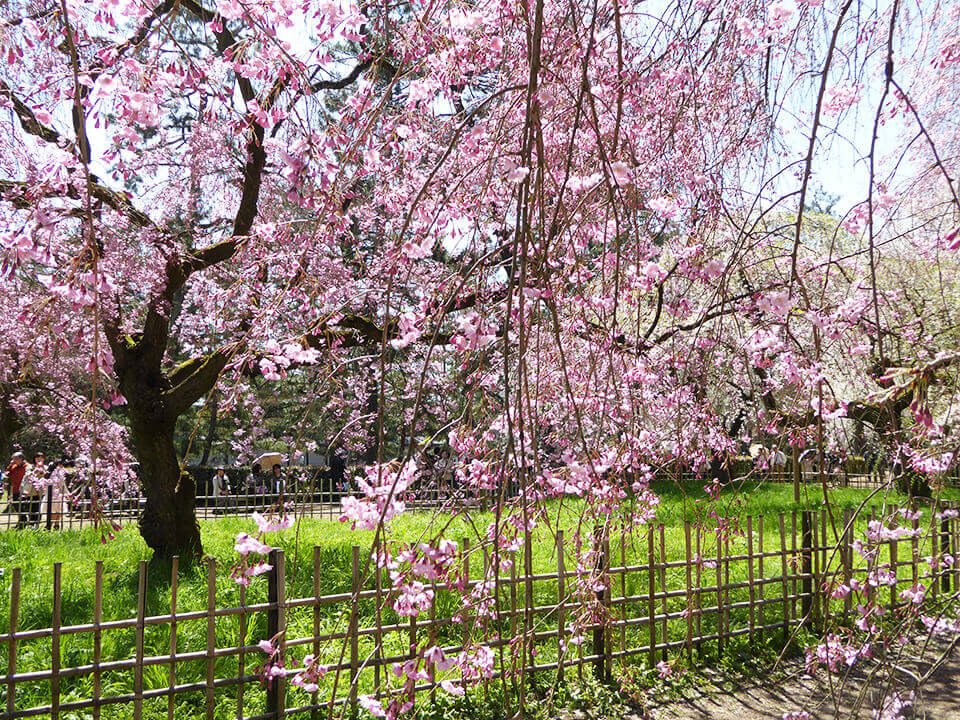
Kyoto Gyoen
By the way, cherry blossoms are not only to be loved,Staged in various situations in historyThe first time I saw a new building, I was surprised to see the number of people who had been
One example is in NorthFugenzo cherry blossom" at Senbon Shakadoright.
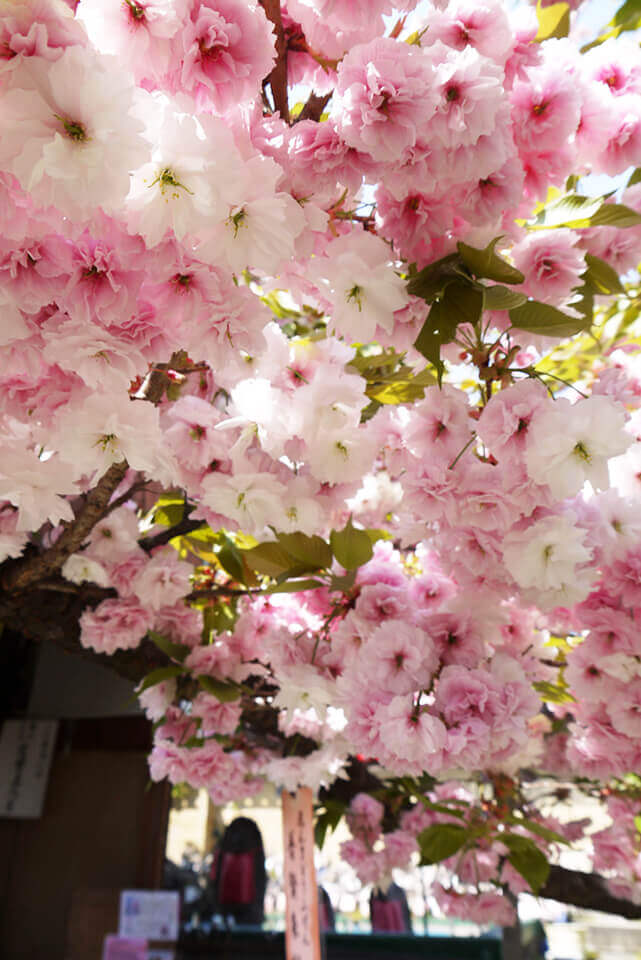
Fugenzo cherry tree at Senbon Shakado
Every year, when someiyoshino cherry trees are falling, fugenzou cherry blossoms bloom in the precincts of the temple. The petals of this cherry tree do not fall off one by one, but rather in clusters.Perhaps the image of the prisoners being decapitated made him think of a prisoner in a prison cell, or perhaps he had a connection to the prison cell.There were.
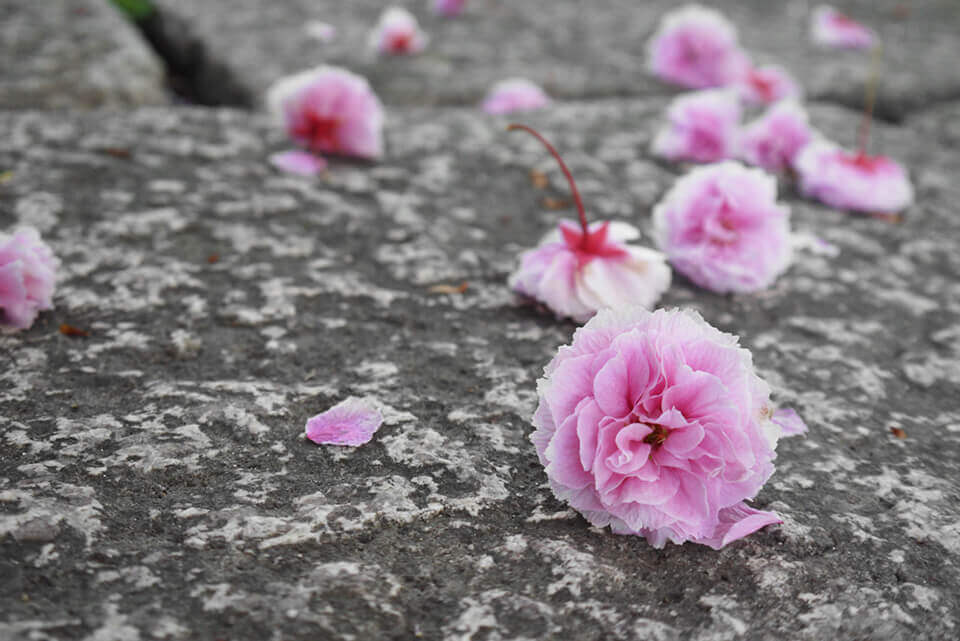
Fallen Fugenzo cherry tree at Senbon Shakado
During the Edo period (1603-1867), it was customary to break off a branch of the Fugenzo cherry tree and offer it to the Tokorojiro (a position held during the Azuchi-Momoyama and Edo periods to run the city government of Kyoto) and receive three koku (five tons) of rice in exchange. Cherry blossoms were decorated in the prison to offer to those who had been sentenced to death. It is said that criminals who were sentenced to death in early spring were beheaded with cherry blossoms in their hands. According to one theory, it was used as an offering to the prisoners.I showed him the Fugenzo cherry tree to arouse his Buddhist spirit.I also hear that.
In the Kamakura period (1185-1333), the Saga Shakado (Seiryo-ji Temple) in Ukyo Ward used to hold a large Buddhist memorial service when the cherry blossoms were in bloom. Many people, lured by the cherry blossoms, gathered at the temple and chanted the Nembutsu to be united with the Buddha. The beauty of the cherry blossoms in full bloom opened people's hearts, and combined with the chanting of the Buddhist prayer, it is easy to imagine how the euphoria increased as people were reminded of the Pure Land of Ultimate Bliss. The fact that people are soothed and lifted by the sight of cherry blossoms is no different today than it has been in the past.
I also came across other slightly unusual legends about cherry blossoms.
The Oharano Shrine is located in Saikyo Ward,Senganzakura.There is a cherry tree called It is a weeping cherry tree with clusters of flowers that resemble paper streamers,From a distance, there appear to be many eyes.The name "kagura" comes from its short blooming period and the fact that the blossoms fall within a few days. It is difficult to see them in full bloom because the blooming period is short and they fall within a few days,The Phantom Cherry BlossomIt is said that If you are lucky enough to see the cherry blossoms in full bloom, you will be granted a thousand eyes, or a thousand wishes. One word Jizo is said to grant only one wish, but it is rare to find one that grants a thousand wishes. I would love to see the cherry blossoms when they are in full bloom.
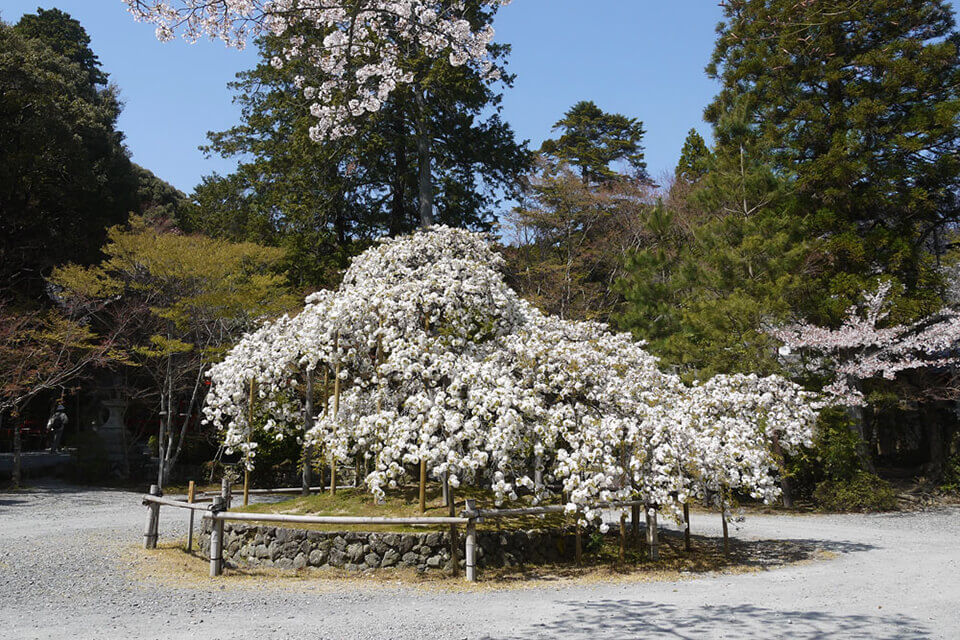
Sengane Cherry Blossom at Oharano Shrine
Ukyo WardOmuro cherry blossom" at Omuro Ninna-ji Templehas been popular as a late bloomer. Characteristically, the trees are short in stature.
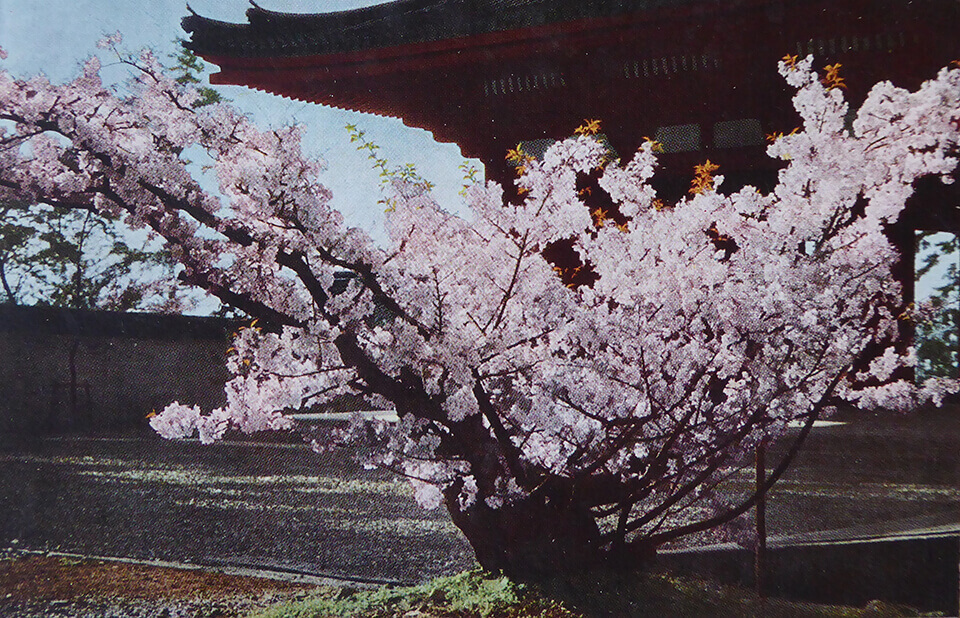
Cherry blossoms in Omuro
(In the possession of the author, an old postcard from about 90 years ago)
The cherry tree is also called "Otafukuzakura" (meaning "Otafuku cherry" in Japanese), as in the song "Watasha Otafuku, Omuro no Sakura: Even though the flowers are low, people like them. In the old days, people used to make fun of women with short noses by calling them "Omuro-zakura" (Omuro-zakura) because of their flowers, but since the Edo period, it has been popular as a cherry tree for common people, and it does not seem to be a bad word.
Also,Mysterious cherry blossoms called "Shigure-zakura."There is a The cherry tree at Gekirin-ji Temple, located at the foot of Mt. Atago in Ukyo-ku, is said to have been planted by Shinran Shonin, and its branches and leaves are said to shed tears. It is said that the branches and leaves of this cherry tree shed tears. It is said that these tears are the tears of Shinran Shonin, who was exiled from Japan, or the tears of regret for parting with him. It is said that the cherry blossoms bloom late, around mid-April to May, and I would like to go see them this year.
The cherry blossoms seem to be late this year, but I hope they will bloom as long as possible and show various expressions, as befits the name of Hanaraku.
Tradition that exists everywhere in the city of Kyoto. It is not just a picture, it is secretly alive in this modern age and continues to coexist with people. The two of Office TO, who previously wrote a series of articles "Kyoto's Demon World Exploration" in the monthly magazine Leaf, explore the mysterious "different" world of Kyoto, which was created over 1200 years. I will unravel the story while actually visiting the place. .
 News
News Feature article
Feature article Featured event
Featured event